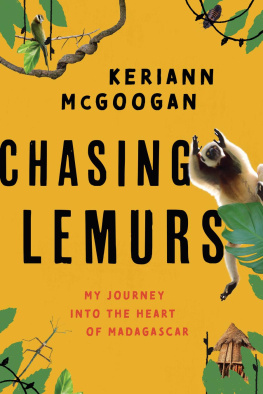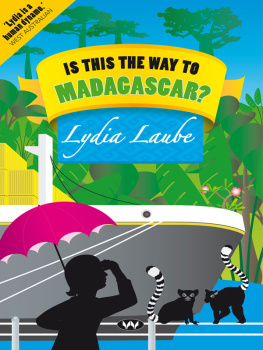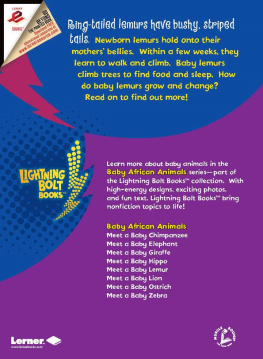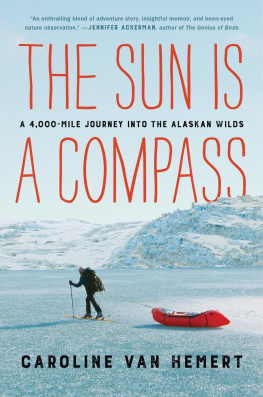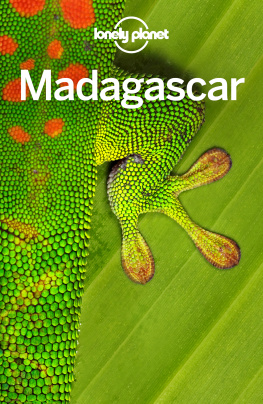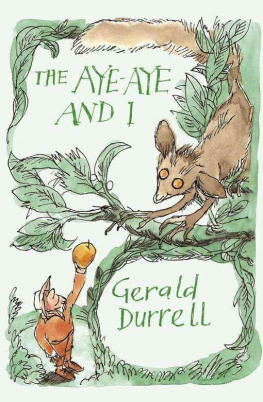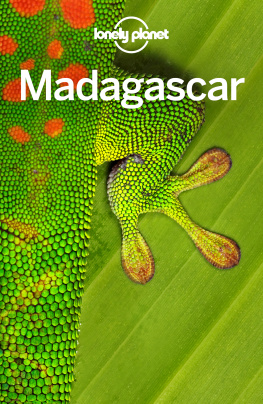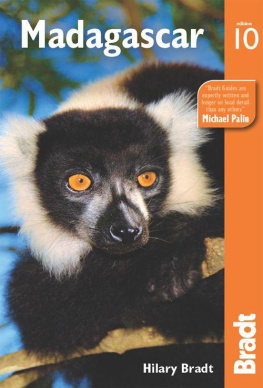

Chasing Lemurs
My Journey into
the Heart of Madagascar
Keriann McGoogan

An imprint of The Rowman & Littlefield Publishing Group, Inc.
4501 Forbes Blvd., Ste. 200
Lanham, MD 20706
www.rowman.com
Distributed by NATIONAL BOOK NETWORK
Copyright 2020 Keriann McGoogan
All rights reserved. No part of this book may be reproduced in any form or by any electronic or mechanical means, including information storage and retrieval systems, without written permission from the publisher, except by a reviewer who may quote passages in a review.
British Library Cataloguing in Publication Information available Library of Congress Control Number: 2019955295
ISBN 9781633886209 (cloth)
ISBN 9781633886216 (ebook)
The paper used in this publication meets the minimum requirements of American National Standard for Information SciencesPermanence of Paper for Printed Library Materials, ANSI/NISO Z39.48-1992.
For Travis: You are my constant inspiration.
And for my Mom and Dadmy biggest champions.
Contents
Prologue: Where There Is No Doctor
vii
Introduction xi
PART I
1 Jane Goodall Is Not Alone
2 Dont Forget the Batteries
PART II
3 Up, Up, and Away
4 Avenue of Independence
5 Big Guy Down
PART III
6 Slowly, Slowly
7 Testing the Young
8 A Sore Throat, an AK-47, and a Useless iPod 99
9 The Trouble with Zebu
10 Crocodiles and Bandits
v
vi CONTENTS
PART IV
11 A Walk in the Park
12 Dropping Like Flies
13 Do Not Kick Away the Canoe
14 Like the Chameleon
15 Planet Madagascar
Full Disclosure
Notes 199
Index 215
Prologue: Where There Is
No Doctor
June 23, 2006
The sand gave a little under my hiking boots as I clambered up onto some large, exposed rocks. I gripped the handle of the small, black, waterproof Pelican briefcase that held the satellite phoneour only lifeline out here in the remote forests of northwestern Madagascar. From up high, I could see the twists and turns of the Mahavavy River as it made its way through the lush green foresta spectac-ular view. But now wasnt the time to drink in the beauty of my surroundings.
I sat down, opened the case, and pulled out the phone. I watched the screen, waiting for the satellites to connect, and took a few deep breaths. Three hours before, in pitch darkness, I had opened my eyes. Keriann. A voice was calling me. Louder: Keriann. I didnt know where I was. I wasnt in my own bed. The sounds, the airthis didnt feel like Toronto. Where was I? As I stared into the dark, I began to see shapes. Directly above, I could see crooked tent poles propping up the fly of my two-man tent. That was it. I shifted my weight and felt the hard ground beneath my blow-up Therm-a-Rest mattress. As I went to reach for my glasses (Im blind without them), I found that I was still securely zippered into my mummy-sack sleeping bag. Inside the bag, I fumbled for the zipper. Then that voice again, more urgent than before.
Keriann?
All at once, I was back. The voice belonged to Fidle, my happy-go-lucky Malagasy cook, who had accompanied me and the others into the remote forest of northwestern Madagascar. We had pitched our tents in a secluded patch of trees near the shore of the Mahavavy River. As a primatologist in training, I had come here to study lemurs in their natural habitat for my PhD. And it had been quite an adventure so far. Just getting hereto the majestically named Kasijy Special Reservehad cost us a ten-day hike and a great deal of angst. But we had made it. And just yesterday, I remembered, smiling at the thought, we had spotted several groups of lemurs bouncing through the trees like hyped-up ver-vii
viii PROLOGUE: WHERE THERE IS NO DOCTOR
sions of Spider-Man. It had been a slog, but my field research season had at last really begun.
But something was wrong. What was Fidle doing at my tent? I broke free of my sleeping bag, popped on my glasses, and felt around in the dark for my headlamp. For Fidle to approach my tent so late at night was highly unusual.
Malagasy people, I had learned, are extremely polite, and there is no way Fidle would wake up the vazaha (foreign) girl in the middle of the night unless he faced an emergency.
Un moment, I said, and unzipped the door of my tent. As I emerged into the night, the bright light of Fidles headlamp blinded me momentarily. I blocked the glare with my hand and Fidle, realizing his error, quickly dimmed his light. He didnt speak French or Englishonly Malagasyand so he gestured for me to follow him toward Andrys tent. Andry, my Malagasy field assistant, was a student from the University of Antananarivo and had already worked a few seasons in the Madagascar wilds. He was experienced in the field and a pro at negotiating the local politics. Not only that, he was indispensable as a translator. None of my Malagasy field guides spoke English or French.
My supervisor, Shawn, had journeyed here with us, but he had headed home some time ago, leaving me in charge, with Andry as my assistant. Whatever was happening now with Andry couldnt be good. My heart sank when I arrived at his tent. He lay flat on his back, shivering uncontrollably. I knelt down next to the open tent-door and spoke softly. Andry, whats wrong? Are you okay?
Ahh... non, Andry said, reverting to French. His teeth were chattering, and his breathing was shallow. I am sick, Keriann. Very sick.
Hang on, I said. My mind racing, I dashed back to my tent to grab my medical bag. I didnt know what I could do for Andry. I was no doctor. I grabbed my kit and a book that Shawn had left with me, appropriately titled Where ThereIs No Doctor.1 This book, Shawn had said, is a guide to peoples health in remote locations. Topics range from diarrhea to ringworm to malaria. It explains how to prevent, recognize, and treat common ailments when you are in places where, as the title indicates, there is no doctor. I had hoped I wouldnt need to use this book, but here we were, only a few weeks into my research season.
Back at Andrys tent, and with my headlamp on, I asked him about his symptoms as I paged slowly through the book. Fever. Chills. Aches. Unfortunately, most of the symptoms were pretty general and could be a sign of almost anything. Sweats. Headache. Nausea. I had a hunch but didnt want to think it.
This Madagascar journey wasnt my first foray into fieldwork. While completing my masters degree at the University of Calgary, I had studied the impact of a devastating Category 4 hurricane on the population density of black howler monkeys in Belize, Central America. I had lived and worked in Belize for six months. And yes, I had dealt before with getting sick in the field.
PROLOGUE: WHERE THERE IS NO DOCTOR ix In fact, we grad students had made a game of trying to diagnose ourselves using our Lonely Planet health guide. Back then, when we were only moderately ill, we had almost laughed as we read through the symptoms and came to the consistent conclusion that we had something terrible. Dengue fever for sure. Or just as bad: malaria. Hilarious, we thought. But now, in Madagascar, with Andry shivering in his tent, no doctor within reach, no one around that spoke either of my languages, and no easy way back to civilization, my memory of that game had lost its charm.
Next page
